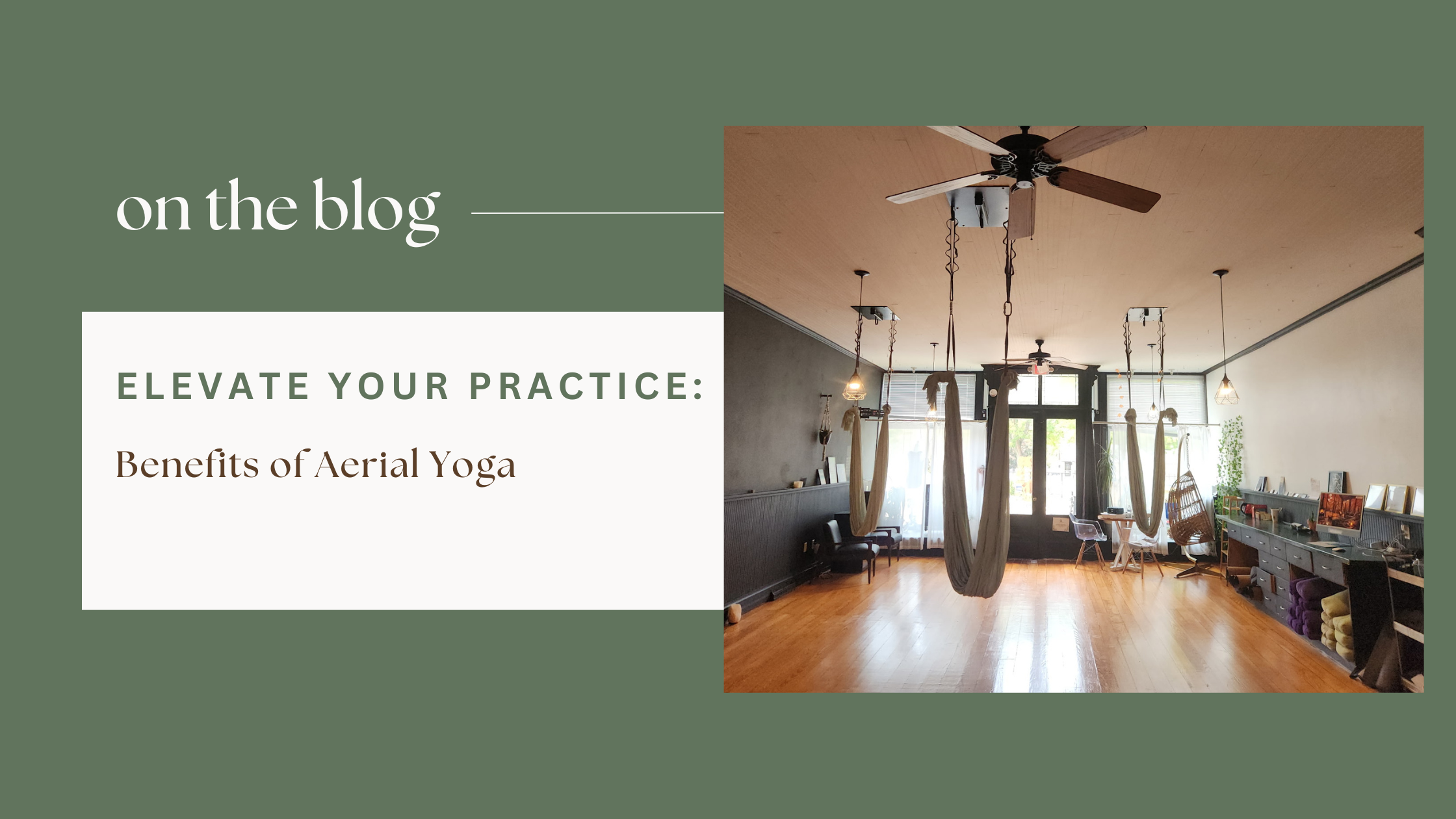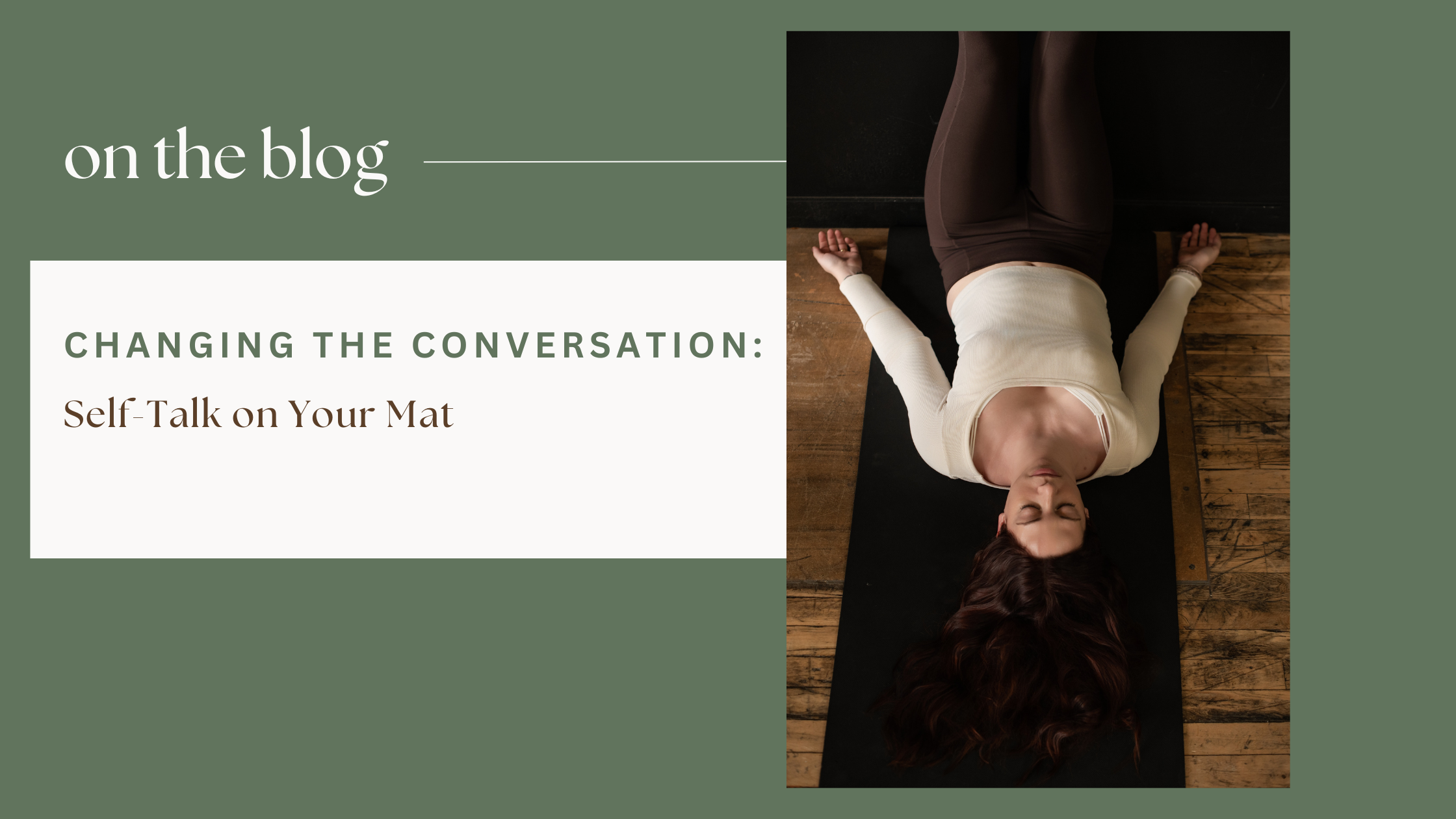Where we explore the beautiful, messy, and meaningful journey of caring for yourself - through movement, celebration, and moments.
Nurture Studios
Elevate Your Practice: The Benefits of Aerial Yoga
If you've ever walked past a yoga studio and spotted people gracefully suspended in silk hammocks, you've witnessed aerial yoga in action. This innovative practice combines traditional yoga poses, Pilates, and dance with the support of a soft fabric hammock. But aerial yoga is more than just Instagram-worthy poses; it offers incredible benefits for your body, mind, and spirit.
What Is Aerial Yoga?
Aerial yoga uses a suspended hammock (also called a yoga swing or silk) to support your body weight as you flow through poses. The hammock allows you to explore movements and positions that might be challenging or impossible on the ground, all while adding an element of playfulness to your practice.
Physical Benefits
Spinal Decompression and Pain Relief
One of the most celebrated benefits of aerial yoga is its ability to decompress the spine. When you're suspended upside down or partially inverted, gravity works in your favor, gently stretching the spine and creating space between the vertebrae. This can provide relief from back pain, improve posture, and counteract the effects of sitting all day.
Improved Flexibility
The hammock provides support that allows you to move deeper into stretches safely. Over time, this can lead to increased flexibility throughout the entire body, particularly in the hips, shoulders, and spine. The fabric supports you in ways that traditional yoga props cannot, helping you achieve greater range of motion.
Core Strength and Muscle Toning
Don't let the gentle appearance fool you—aerial yoga is a full-body workout! Maintaining balance in the hammock engages your core muscles constantly. You'll build strength in your arms, shoulders, back, and legs as you hold poses and transition between movements. The instability of the hammock adds an extra challenge that helps tone muscles you didn't even know you had.
Low-Impact Exercise
Because the hammock supports much of your body weight, aerial yoga is gentle on the joints. This makes it an excellent option for people recovering from injuries, dealing with arthritis, or anyone looking for a low-impact way to stay active while still building strength and flexibility.
Better Balance and Body Awareness
Working with the hammock requires focus and coordination. As you practice, you'll develop greater proprioception (awareness of your body in space) and improved balance. These skills translate to better stability and coordination in everyday life.
Mental and Emotional Benefits
Stress Relief and Relaxation
There's something deeply calming about being cradled in a hammock. The gentle swaying motion can be meditative and soothing to the nervous system. Inversions also increase blood flow to the brain, which can help reduce stress hormones and promote a sense of calm and clarity.
Boosted Mood and Confidence
Let's be honest—there's something undeniably fun about swinging through the air! Aerial yoga reconnects you with a sense of playfulness and joy. Plus, mastering new poses and inversions builds confidence both on and off the mat. Every time you accomplish something that initially seemed impossible, you prove to yourself what you're capable of.
Mindfulness and Presence
When you're suspended in the air, you have no choice but to be fully present. Aerial yoga demands your complete attention, making it an effective form of moving meditation. This mindfulness practice can help quiet mental chatter and bring you into the present moment.
Overcoming Fear
Many people are initially nervous about inversions or being off the ground. Aerial yoga provides a safe, supportive environment to face these fears. Working through initial discomfort builds mental resilience and teaches you that you're stronger and braver than you thought.
Unique Advantages Over Traditional Yoga
While traditional yoga offers countless benefits, aerial yoga provides some unique advantages:
Easier inversions: The hammock allows people who might struggle with headstands or handstands to experience the benefits of inversions safely
Support for challenging poses: The fabric assists you in poses that might otherwise require years of practice to achieve
Added element of fun: The playful nature of aerial yoga can make it easier to stick with a regular practice
Lymphatic drainage: The inversions and compressions help stimulate the lymphatic system, supporting detoxification and immune function
Who Can Practice Aerial Yoga?
Aerial yoga is accessible to most people, regardless of fitness level or yoga experience. Beginners often find it easier than traditional yoga because the hammock provides support and guidance. However, you should consult with your doctor before trying aerial yoga if you:
Are pregnant
Have high or low blood pressure
Have glaucoma or other eye conditions
Have recent or chronic injuries
Have vertigo or inner ear issues
Getting Started
If you're curious about aerial yoga, the best way to experience its benefits is simply to try it! Look for beginner-friendly classes where instructors can guide you through the basics safely. Come with an open mind, wear fitted clothing, and be prepared to laugh, challenge yourself, and maybe see the world from a new perspective—literally!
Whether you're looking to decompress your spine, build strength, reduce stress, or just try something new and exciting, aerial yoga offers a unique path to wellness. So why not take the leap and suspend yourself in possibility? Your body and mind will thank you.
Ready to experience the benefits of aerial yoga for yourself? Check out our beginner-friendly classes at Nurture Yoga & Creative Studio. No experience necessary—just bring your sense of adventure!
Changing the Conversation: Self-Talk on Your Mat
You know that voice - the one that shows up the moment you step onto your mat. It might whisper things like "You should be able to do this by now" or "Everyone else looks so much more graceful." Maybe it gets louder when you need to rest, when you wobble, or when yesterday's easy pose feels impossible today.
Here's what I want you to know: that inner conversation happening during your practice? It's just as important as any pose you'll ever attempt. And just like your physical practice, it can be cultivated with patience, awareness, and a whole lot of compassion.
The way we speak to ourselves on the mat often reflects how we speak to ourselves everywhere else. So when we practice shifting that inner dialogue during yoga, we're actually training for life.
1. Notice Before You Judge (The Gentle Pause)
The first step isn't to stop the critical thoughts - that's asking too much and often makes them louder. Instead, we're going to practice noticing them before they spiral.
Here's how:
The moment you catch yourself in negative self-talk ("I'm so inflexible," "I'm the worst at balancing," "I shouldn't need to modify"), pause. Don't fight the thought. Don't judge yourself for having it. Just notice it like you'd notice a cloud passing overhead.
Try saying to yourself: "I notice I'm being critical right now." That's it. No fixing, no forcing positivity. Just awareness.
Why this works: When we name what's happening without judgment, we create space between ourselves and the thought. That space is where choice lives. In that pause, you remember: you are not your thoughts, and you get to decide which ones deserve your attention.
On the mat: Maybe you're in warrior three and you wobble. Instead of immediately thinking "I'm terrible at this," try: "I notice I'm being hard on myself about wobbling. Wobbling is just information - my body is finding its balance."
2. Talk to Yourself Like Your Best Friend (The Compassion Flip)
Here's a question that changes everything: If your dearest friend was struggling with the same thing you're struggling with, what would you say to them?
I'm willing to bet it wouldn't be "You should be better at this by now" or "You're so weak." You'd probably offer understanding, encouragement, maybe even remind them that growth takes time.
Here's how:
When you catch yourself being self-critical, pause and ask: "What would I say to a friend in this situation?" Then say exactly that - to yourself.
Replace harsh judgments with curious observations:
Instead of "I'm so stiff today" → "My body feels different today, and that's okay"
Instead of "I can't even hold this pose" → "I'm learning what my body needs right now"
Instead of "Everyone else is better than me" → "Everyone's practice looks different, and that's beautiful"
Why this works: We often have more compassion for others than ourselves. This practice helps us extend that same kindness inward. It's not about lying to yourself or forcing fake positivity - it's about offering yourself the basic respect and understanding you'd give anyone you care about.
On the mat: You're in a flow sequence and you lose your breath, feel uncoordinated. Instead of mental criticism, try: "Hey, it's okay. This is challenging today, and I'm doing my best. That's actually really brave."
3. Reframe the Story (The Empowering Narrative)
Our brains love stories, and we're constantly telling ourselves stories about what things mean. "I fell out of tree pose" becomes "I'm bad at yoga." "I needed to rest in child's pose" becomes "I'm weak."
But here's the beautiful thing about stories - you get to choose which one you tell.
Here's how:
When you notice yourself creating a negative story about your practice, pause and ask: "What else could this mean? What's another way to look at this?"
Some reframes to try:
"I'm not flexible enough" → "I'm exploring my edge and learning about my body"
"I had to modify" → "I listened to my body's wisdom and honored what it needed"
"I couldn't quiet my mind" → "I practiced noticing my thoughts without being controlled by them"
"I cried during class" → "I created space for my emotions and let them move through me"
Why this works: When we consciously choose empowering narratives, we're not denying reality - we're choosing to focus on the parts of our experience that help us grow. We're training our brains to look for evidence of our strength, wisdom, and courage instead of our perceived shortcomings.
On the mat: You're in pigeon pose and it feels intense emotionally. Instead of "I'm being too sensitive" or "I should be able to handle this," try: "My body is releasing what it's been holding. This discomfort is part of my healing. I'm brave for staying present with this."
The Ripple Effect
Here's the beautiful thing about practicing better self-talk during yoga: it doesn't stay on the mat. When you train yourself to speak with kindness and curiosity to yourself in one area of your life, it starts showing up everywhere.
That critical voice that used to take over during challenging poses? It gets quieter in traffic, at work, in difficult conversations. That compassionate inner friend you're cultivating? They start showing up when you spill coffee on your shirt, when you make a mistake, when life feels hard.
Remember This
Changing your inner dialogue isn't about perfection - it's about practice. Some days you'll catch the critical thoughts early. Other days they'll run the show for a while before you remember you have a choice. Both are completely normal parts of the process.
Your yoga practice is already teaching you so much about strength, flexibility, and balance. Now you can let it teach you about self-compassion too.
The next time you step onto your mat, bring this awareness with you: you are not just practicing poses, you're practicing a way of being with yourself. Make it a kind one.
Your inner conversation matters. You deserve to hear love in your own voice.


